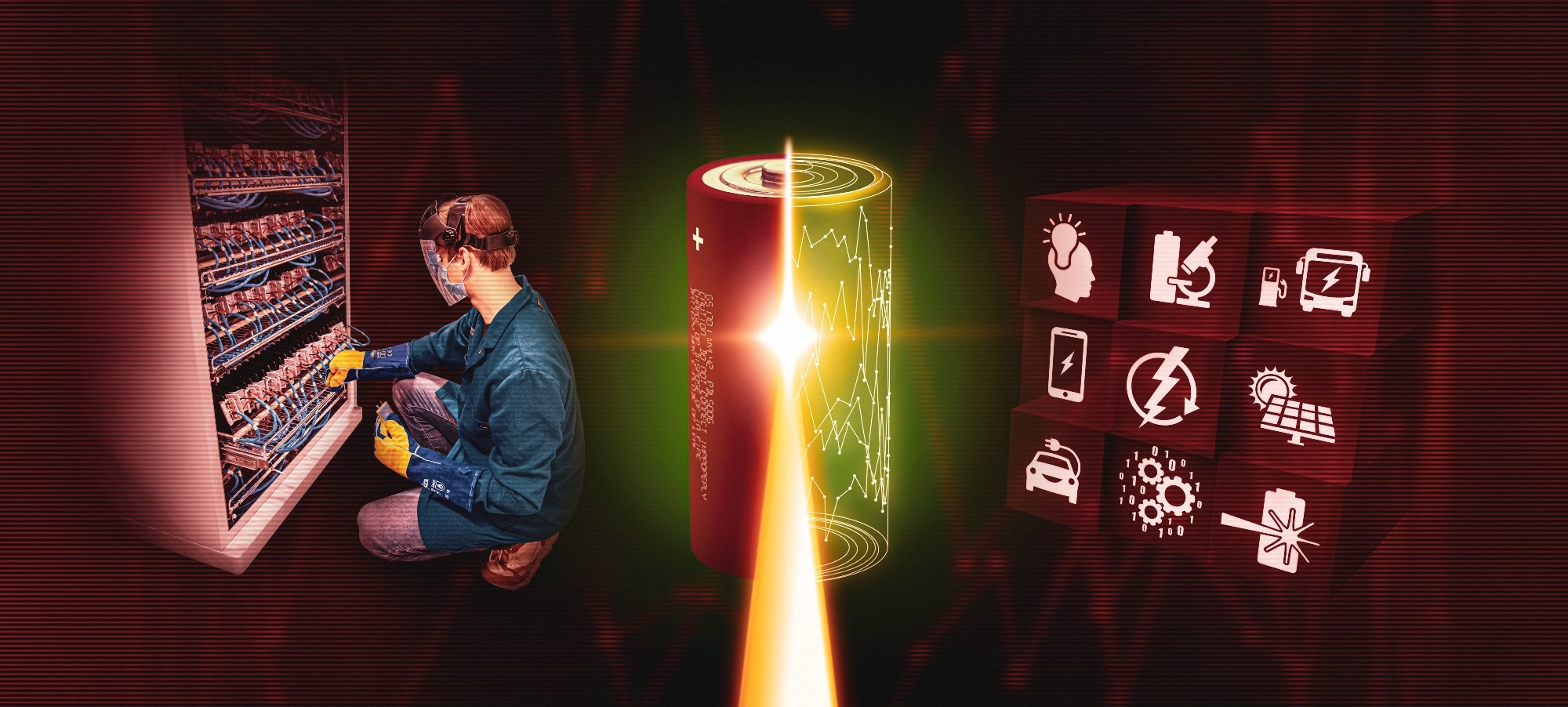The Department of Energy’s SLAC National Accelerator Laboratory and Stanford University has announced the launch of a new joint battery center at SLAC. It will bring together the resources and expertise of the national lab, the university and Silicon Valley to accelerate the deployment of batteries and other energy storage solutions as part of the energy transition essential for addressing climate change.

The new SLAC-Stanford Battery Center will bridge the gaps between battery research, manufacturing and applications. Image Credit: Greg Stewart/SLAC National Accelerator Laboratory
A key part of this transition will be decarbonizing the world’s transportation systems and electric grids – to power them without fossil fuels. To do so, society must develop the capacity to store several hundred terawatt-hours of sustainably generated energy. Only about 1% of that capacity is in place today.
Filling the enormous gap between what we have and need is one of the biggest challenges in energy research and development. It will require that experts in chemistry, materials science, engineering and a host of other fields join forces to make batteries safer, more efficient and less costly and manufacture them more sustainably from earth-abundant materials globally.
The SLAC-Stanford Battery Center will address that challenge. It will serve as the nexus for battery research at the lab and the university, bringing together large numbers of faculty, staff scientists, students and postdoctoral researchers from SLAC and Stanford for research, education, and workforce training.
“We’re excited to launch this center and to work with our partners on tackling one of today’s most pressing global issues,” said interim SLAC Director Stephen Streiffer.
“The center will leverage the combined strengths of Stanford and SLAC, including experts and industry partners from various disciplines, and provide access to the lab’s world-class scientific facilities. All of these are important to move novel energy storage technologies out of the lab and into widespread use.”
Stephen Streiffer, interim SLAC Director
Expert Research with Unique Tools
Research and development at the center will span a vast range of systems – from understanding chemical reactions that store energy in electrodes to designing battery materials at the nanoscale, making and testing devices, improving manufacturing processes, and finding ways to scale up those processes so they can become part of everyday life.
“It’s not enough to make a game-changing battery material in small amounts,” said Jagjit Nanda, a SLAC distinguished scientist, Stanford adjunct professor and executive director of the new center, whose background includes decades of battery research at DOE’s Oak Ridge National Laboratory. “We have to understand the manufacturing science needed to make it in larger quantities on a massive scale without compromising on performance.”
Longstanding collaborations between SLAC and Stanford researchers have already produced many important insights into how batteries work and how to make them smaller, lighter, safer, and more powerful. These studies have used machine learning to quickly identify the most promising battery materials from hundreds made in the lab, and measured the properties of those materials and the nanoscale details of battery operation at the lab’s synchrotron X-ray facility. SLAC’s X-ray free-electron laser is available, as well, for fundamental studies of energy-related materials and processes.
SLAC and Stanford also pioneered cryogenic electron microscopy (cryo-EM), a technique developed to image biology in atomic detail to get the first look at finger-like growths that can degrade lithium-ion batteries and set them on fire. This technique has also been used to probe squishy layers that build up on electrodes and must be carefully managed in research performed at the Stanford Institute for Materials and Energy Sciences (SIMES).
Nanda said the center would also focus on making energy storage more sustainable, for instance, by choosing materials that are abundant, easy to recycle, and can be extracted in a way that’s less costly and produces fewer emissions.
A Unique Collaboration in the Heart of Silicon Valley
Battery Center Director Will Chueh, an associate professor at Stanford and faculty scientist at SLAC, emphasized that the center is located in the middle of Silicon Valley’s entrepreneurial culture, two miles from the Stanford campus and a short walk away from extensive, world-class scientific facilities that only a national lab can provide. This generates advantages that would be impossible for any single partner to achieve, including outstanding educational and training opportunities for Stanford students and postdocs that will be outsized in shaping the next generation of energy researchers.
“There’s no other place in the world,” Chueh said, “where all of this comes together.”
A pilot project for the center began in 2020 with two battery laboratories in SLAC’s Arrillaga Science Center, where Stanford students and postdoctoral researchers have been synthesizing battery materials and evaluating devices.
The center is operated by SLAC’s Applied Energy Division and Stanford’s Precourt Energy Institute. Major funding for battery research at SLAC comes from the DOE Office of Science and Office of Energy Efficiency and Renewable Energy. SLAC’s Stanford Synchrotron Radiation Lightsource (SSRL) and Linac Coherent Light Source (LCLS) X-ray free-electron laser are DOE Office of Science user facilities.